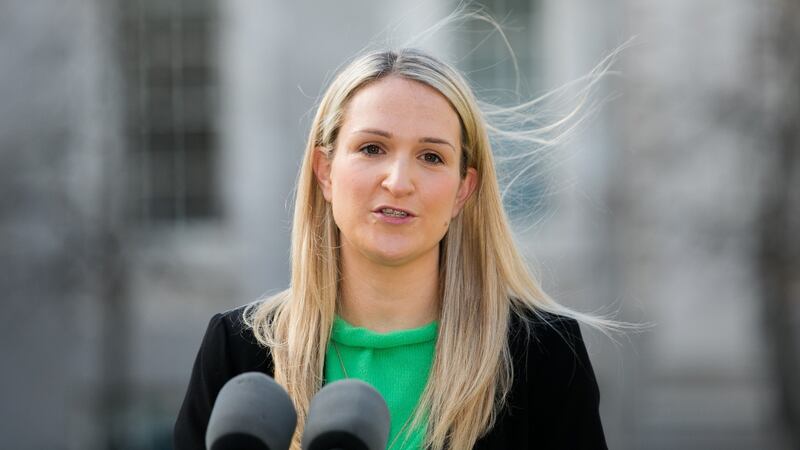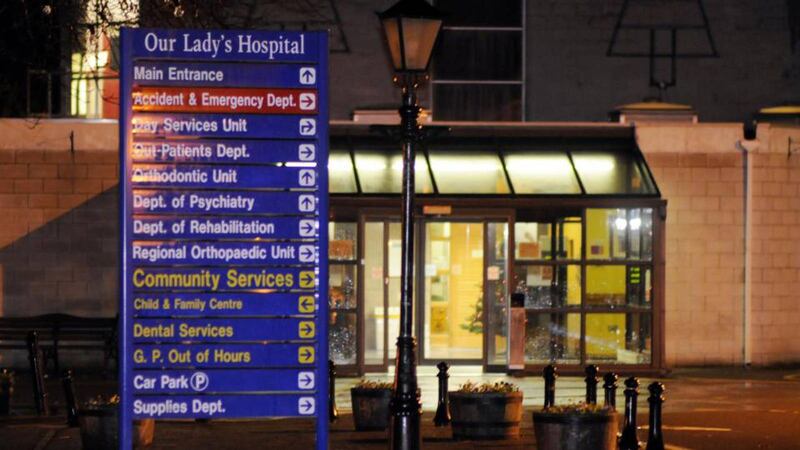The Health Service Executive found many words last week to describe its intentions for Navan Hospital’s emergency department, except the most obvious one – closure.
The plan to divert critically ill patients bound for the ED to other hospitals represented “a change”, “a transition”, “an evolution” and even “a strengthening” of the hospital, officials variously said.
“It’s not about closure, it’s about realignment,” HSE chief executive Paul Reid told the Oireachtas health committee last Wednesday.
That’s not how people in Co Meath saw it. The very active Save Navan Hospital campaign collected thousands of signature opposing the move and is organising a public meeting at the end of the month; marches will inevitably follow. Meath councillors demanded an immediate meeting with HSE officials and Minister for Health Stephen Donnelly.
READ MORE
Government ministers, led by Minister for Justice and local TD Helen McEntee, were quickly out of the traps in criticising the HSE’s actions.
McEntee bluntly described the proposal to send critically ill patients to hospitals outside the county as unacceptable unless they were adequately resourced.

Tánaiste Leo Varadkar, in backing his Cabinet colleague’s stance, fondly reminisced about his time training in Navan and the “good care” patients received there.
Meanwhile, Sinn Féin has organised a public meeting on Monday in Navan against the HSE plan to be addressed by its leader Mary Lou McDonald.
On Monday of last week, HSE officials briefing local public representatives said implementation of the plan would start at the end of this month. Someone erred, apparently, to the vexation of the department; by lunchtime, the same officials told journalists at a briefing there is as yet no timeline for implementation.

It was as though the HSE on the one hand, and the Department of Health and the ministers it briefs on the other, live in separate worlds. Or, as Sinn Féin’s David Cullinane put it, that “the left hand doesn’t know what the right hand is doing”.
Kerfuffle
Throughout the week, health sources gave the impression the ongoing kerfuffle was just a minor blip on the path to implementation of the HSE’s plans. The safety concerns around Navan’s ED trump all other considerations, they intimated.
On the other side of the fence, political sources were equally insistent that the ED will not be shut. “Another Roscommon, another Limerick – thanks, but no thanks,” said one senior source.
That Co Roscommon doesn’t have a Fianna Fáil or Fine Gael TD can in large measure be traced back to the 2011 decision to close the ED in Roscommon town. That led to the resignation of then Fine Gael TD Denis Naughten, who opposed the move, and the political death in the county of another Fine Gael TD, Frank Feighan, for supporting it.
As for University Hospital Limerick, the focus of a damning report by the State’s health service watchdog on Friday, its many problems are often traced back to the closure of EDs in Ennis and Nenagh hospitals a decade ago. The fear in Government is that something similar might result if Navan’s overflow ends up adding to the overcrowding in Drogheda.
Yet the HSE estimates that only five to six patients a day will be affected. “It’s hardly a tsunami that’s going to swamp the system,” comments one health source.

Locals are sceptical about the assurances given. “There is no way this can be considered before there is sufficient capacity in the other hospitals that will have to receive patients who were destined for Navan,” says local Fine Gael councillor Suzanne Jamal. “The average wait time in Our Lady of Lourdes Hospital in Drogheda is already 14 hours.”
Jamal’s husband, Ahmad, is a consultant working in both Navan and Drogheda who also sits on the Fine Gael national executive. Mr Donnelly specifically referenced the concerns of clinicians “at other hospitals” in a statement released on Tuesday that stressed no decision has been made by “this Government” on the issue.
Donnelly referred to “this Government” because the closure of Navan’s ED was envisaged as part of the decision of a previous government to implement the Smaller Hospital Framework Document back in 2013. That provided for nine smaller hospitals changing from model 3 status to model 2, with the closure of their EDs a consequence.
Of the nine, only Navan still has a functioning ED, thanks to years of political foot-dragging prompted by electoral calculations and stout local resistance.
Zombie-like
The emergency department may still be open, but it leads a zombie-like existence, bypassed by ambulances carrying heart attack and stroke victims, and with cover provided by agency registrars (ie, not consultants) who aren’t specialised in emergency medicine. It isn’t accredited for training junior doctors (so can’t attract staff) and its ICU is the smallest in the country.
But is Our Lady of Lourdes Hospital in Drogheda ready for the additional work coming from Navan? The HSE says it has added 100 beds in Drogheda, along with three more operating theatres and ICU beds. Some 2,100 ambulance transfers from Navan to Drogheda are envisaged, with up to eight additional admitted patients per day.
As for the future of Navan, an eight-bed medical assessment unit (MAU) will be provided. Unlike MAUs in other parts of the country, this will be open 24/7. Whether this can be justified in the long term, given that patients have to be referred by their GP, remains to be seen.
The health service can justifiably point to the successful transition of other smaller hospitals whose EDs were shut. Roscommon, St Colmcille’s in Loughlinstown, Louth, Mallow and other facilities have all diversified into lower-end medical care and procedures or daycare, with no loss of employment locally.
Readers outside the northeast may be inclined to view the fuss over Navan Hospital as a storm in a tea-cup, but the controversy has wider implications. Here is a proposal first mooted in 2009, given concrete form in 2013, whose implementation by the HSE has been repeatedly advanced and then delayed. Little has changed since 2017 when it last tried to act on the safety concerns of its doctors but was rebuffed by its political masters.
If the HSE is unable to succeed in effecting a small change, affecting a handful of patients daily, what hope is there of it delivering the promised transformation of healthcare under Sláintecare?














